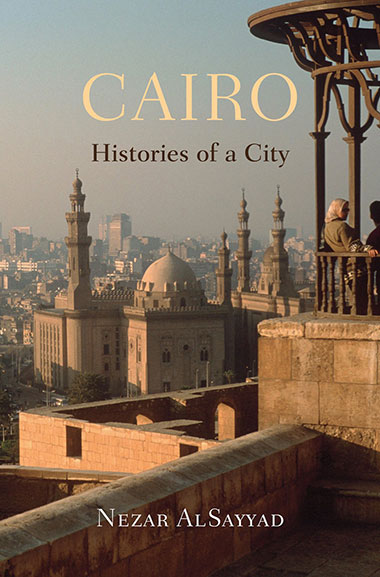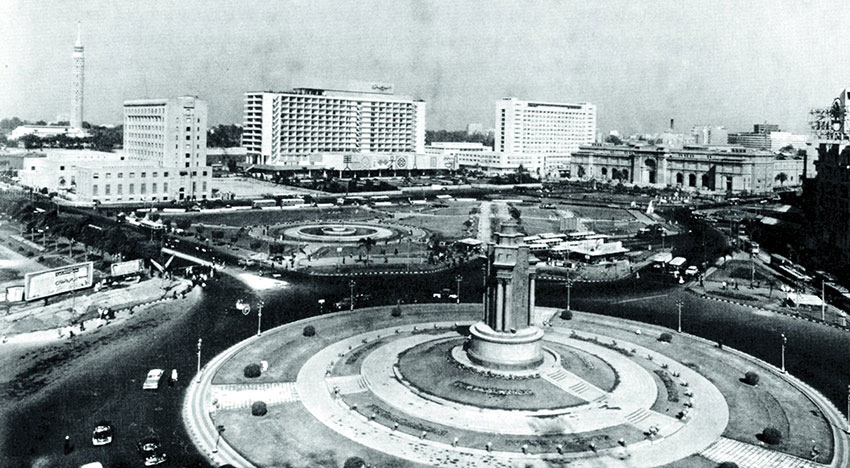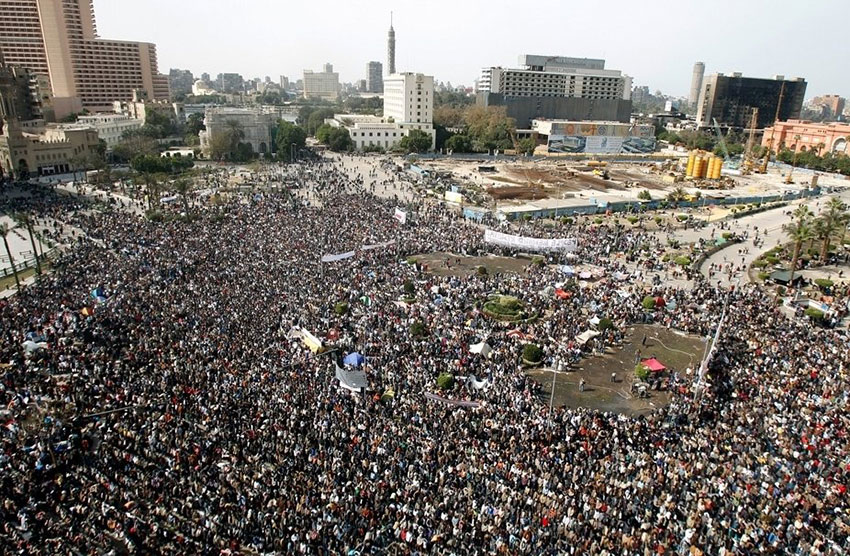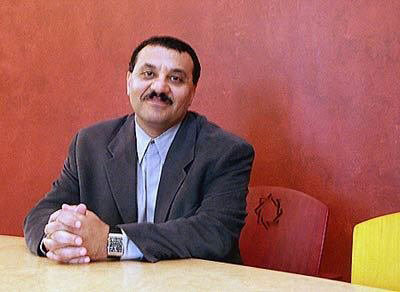

 Nezar AlSayyad is a Cairo-born professor of Architecture, Planning and Urban History and the chair of Center for Middle Eastern Studies at the University of California at Berkeley. He's also a lucid thinker and the author of the forthcoming book Cairo: Histories of a City from Harvard University Press. I've spoken with Nezar a couple times before, but with the magnificent success of the recent Egyptian protests and with Tahrir Square entering the popular American lexicon I wanted to put a few questions about the design, history, and spirit of the place to the professor. I was fascinated by what he had to say.
Nezar AlSayyad is a Cairo-born professor of Architecture, Planning and Urban History and the chair of Center for Middle Eastern Studies at the University of California at Berkeley. He's also a lucid thinker and the author of the forthcoming book Cairo: Histories of a City from Harvard University Press. I've spoken with Nezar a couple times before, but with the magnificent success of the recent Egyptian protests and with Tahrir Square entering the popular American lexicon I wanted to put a few questions about the design, history, and spirit of the place to the professor. I was fascinated by what he had to say.
Can you give us a bit of history of Tahrir Square in Cairo? Tahrir Square came into existence 140 years ago during the time of another ruler who was considered ruthless, Ismail. He had lived in Paris, in Haussmann's Paris and saw the changes that came about in France under Napoleon III and he wanted to remake Cairo in the image of Paris. If George Bush was the decider, Ismail was the modernizer. So he redesigned an area that was all pretty much vegetation adjacent Nile, and from time to time would be flooded by the Nile. It was known as Ismailia Square because of him. But it's not really a city square in strict urban planning terms is it? No, it's not exactly a square at all. For one, the Nile borders one edge, so that's not straight. And it's not surrounded by buildings on all four sides, it only has buildings on one side. It's an ill-defined space that is constituted by five or six adjacent spaces, and in a sense no one really paid attention to it. Why from a design angle was it so successful as a point of protest? Twenty-three streets lead to different parts of it, which is why it was so successful with the demonstrators. There isn't one big boulevard that you can block off, and there are two bridges that lead to it as well. One of them saw a clash between the regime and the demonstrators. It's also the case that all of downtown Cairo, which isn't that big, has a street that leads to side or another of Tahrir Square. Tell me about the name, Liberation Square, and it's import. Tahrir Square got its name by a presidential decree in 1955. It was supposed to be a sign of Egypt's liberation from the British--who actually left in the 20s--and also from the monarchy of King Farouk. Actually in Tarhrir Square there is a large pedestal that was put in place in the time of King Farouk that was supposed to have a statue of him on top. But it never got built and power changed hands so President Nasser decided to keep the pedestal with nothing on it as a reminder of the failure of the Egyptian monarchy. But honestly it's not really clear to me what liberation the presidential decree was recognizing. In my opinion Tahrir Square didn't earn it's name until January 25th, 2011. There are other Tahrir Squares in the Arab world, no? Yes, there are Tahrir Squares in Tripoli and in Damascus and Sanaa too. The one in Sanaa was planned in the 1950s and named after the Tahrir Square in Cairo. But not so much for the actual square, but more for the idea of a Liberation Square. And now in Sanaa that's where the demonstrators are meeting, just like in Cairo. But the Yemeni regime has learned some lessons from Egypt. They are sending their supporters to Tahrir Square not to beat up the protestors, but with tents that they're setting up. They claim that they're there to demand more housing, but actually those people in tents are pushing demonstrators against the regime out of the square. Here the regime is making use of Tahrir Square in a way that in Egypt it couldn't. I was amazed in the aftermath of the protests to see people cleaning up Tahrir Square. Is this kind of civic pride part of Egyptian culture, or is this an anomaly? This is totally unprecedented. No one has ever seen Tahrir Square that clean before and nothing in Egypt has ever been that clean at all. These are people who are bringing their brooms from home and cleaning up. A lot of protestors thought the square was turning into a dump and they engaged in cleaning it up. Actually the Muslim Brotherhood, a feared opposition in Egypt and in the US, has led the clean up efforts. They have often been good at providing the kinds of services that the government could not. But now the square is cleaner than it's ever been. I'm going to Cairo on the 23rd so I'll see for myself. Why are you going? I'm actually on a jury to judge a design for an area next to Tahrir Square. All the submissions came in on January 23rd, days before the demonstrations. Do you think that your judging will be affected by the changes in Cairo? I don't think it's proper to judge based on events that the competitors couldn't know about. But it might be quite hard.


